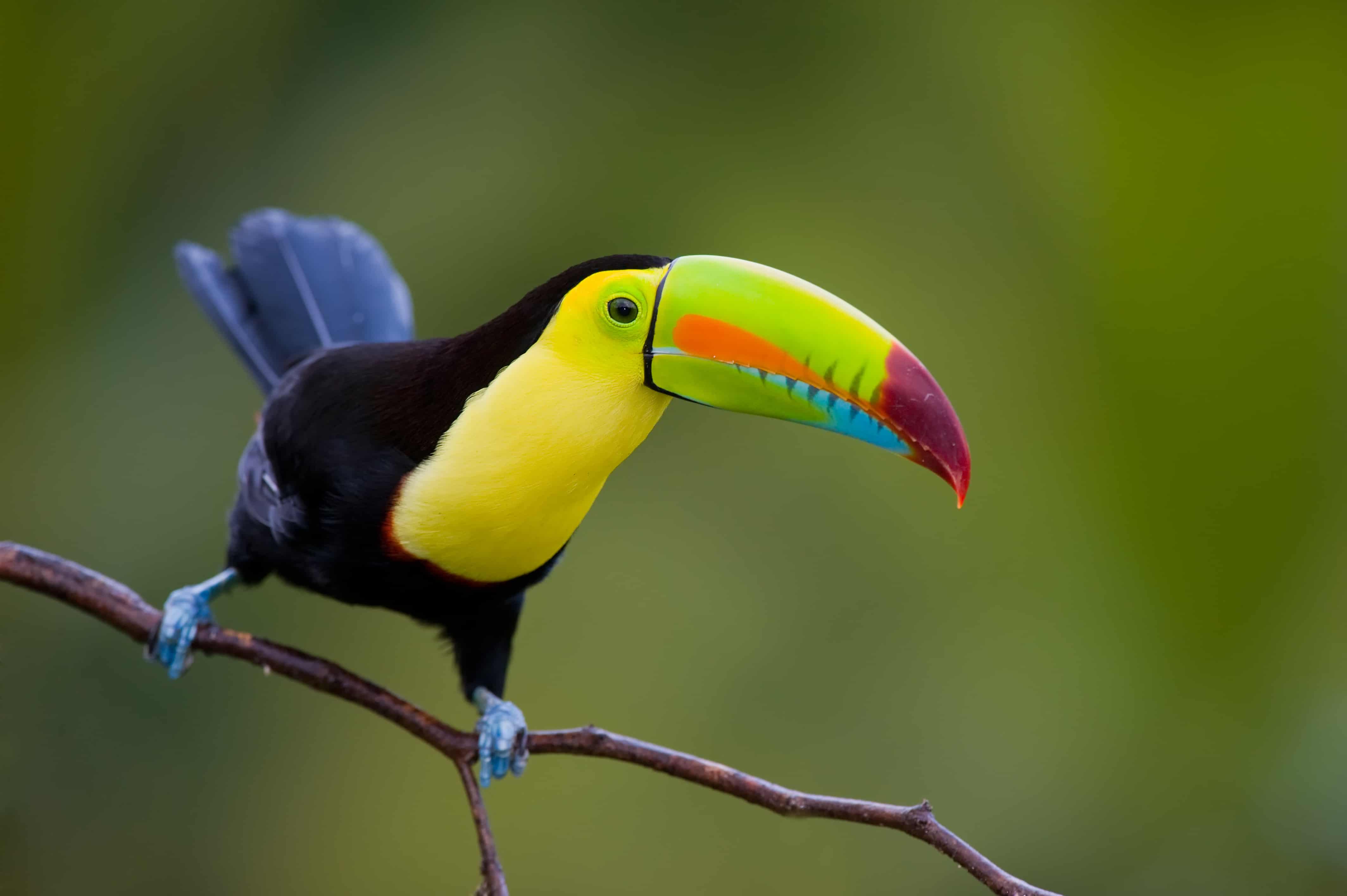 Danny Warren/iStockphoto
Danny Warren/iStockphoto
By Merle Rosenstein
Sun-saturated Central America, an s-shaped isthmus between Mexico and Columbia, has more than its fair share of beautiful beaches. Nestled between the Caribbean Sea and the Pacific Ocean, Central American beaches offer surprising variety – from secluded island coves sheltered by towering palms to popular stretches of mainland coastline featuring white, gray, black, or pink sand. Both coasts lay claim to pristine waters, spectacular coral reefs, drop dead gorgeous beaches and diverse marine life.
Panama: Two Tides Are Better Than One
With the Atlantic and Pacific Oceans a mere 80 kilometres apart, visitors to Panama can experience two oceans in one day – the vibrant Caribbean-style Atlantic and the vast Pacific Ocean, full of large marine species. No need to worry about crowds here – in Panama the beaches are often deserted. With more than 1,000 islands on the Pacific side and a about 500 on the coast of the Caribbean, there are many beaches to choose from.
The San Blás Archipelago, inhabited by the Kuna Indians, is a string of more than 350 islands (only 49 are inhabited) stretching towards the Columbian border. Made famous by the TV show Survivor, the beaches of San Blás off the Caribbean coast epitomize the term ‘picture perfect’. Visitors to the Kuna Yala Islands can kick back and catch some rays or snorkel along the many coral reefs close to the shoreline
Isla Bastimentos, the main island of Isla Bastimentos National Park in Bocas del Toro is known for its exquisite beaches such as Red Frog Beach, Wizard Beach and Playa Larga. With soft white sand backed by jungle, the coral-rich ‘Cayos Zapatillos’ or slipper islands boast crystal clear waters and excellent snorkeling with large numbers of orange starfish resting on the ocean floor at Starfish Beach.
Despite fine snorkeling opportunities, the Las Perlas Archipelago (Pearl Islands) in the Pacific, does not see many visitors. Isla Contadora offers accommodation and day trips to uninhabited beaches and Isla San José has a luxury lodge.
Often compared to the Galapagos Islands for its diverse species and unique ecosystem, Isla Coiba National Park, Panama’s number one diving and snorkeling site, features fine beaches backed by dense jungle. www.visitpanama.com Belize Tourism BoardBelize: Huge Reef Relief
Belize Tourism BoardBelize: Huge Reef Relief
Bordered by Mexico to the north and Guatemala to the south this Caribbean coast republic is considered “Mother Nature’s Best Kept Secret”. Belize’s premier attraction, the 300-kilometre Belize Barrier Reef is the largest in the western hemisphere and boasts more than 70 types of hard corals and nearly 500 species of fish. With 450 islands and islets (called cayes) visitors to Belize are never far from water.
Best beaches are found at Ambergris Caye and Caye Caulker, near the Mexican-Belize border, Lighthouse Reef, off the coast of central Belize, and along the southern coast of the mainland (Dangriga and Placencia).
Located near the lively town of San Pedro, Amerbergis Caye, the largest and most popular of Belize’s many islands, lies about 1.6 kilometres from the Belize Barrier Reef. Even after 30 years of tourism, much of the native charm still remains. Stunning beaches, soft white coral and cooperating currents attract divers.
Caye Caulker with its motto of “no shirt, no problem” was named one of the “Top 10 Emerging Beach Destinations,” by Travel and Leisure in 2008. Warm waters, pristine sandy beaches and gently arching mangroves encourage visitors to “go slow”.
Also located along the massive Belize Barrier Reef, Placencia Beach, south of Dangriga has many activities to occupy visitors. The water surrounding the peninsula is crystal clear and bathwater-warm.
Part of the Lighthouse Reef Atoll (a ring-shaped coral island surrounding a lagoon), Half Moon Caye Beach gives snorkelers a spot to pull up a hammock and lounge around.
Eighty kilometres off the coast, the Great Blue Hole is an amazing natural phenomenon that was brought to world attention by Jacques Cousteau in the 1970s. Located in the centre of Lighthouse Reef and referred to by divers as the ‘Aquarium’ the Great Blue Hole allows for perfect views of marine life. www.travelbelize.org Eduardo Rivero/ShutterstockCosta Rica: All Natural
Eduardo Rivero/ShutterstockCosta Rica: All Natural
Like Panama, Costa Rica, resting on the Caribbean Sea, spans two coasts and is well known for its amazing biological diversity. With a vast array of natural attractions including national parks, caves, waterfalls, scenic valleys, volcanoes and white sand beaches, Costa Rica draws tourists from around the globe.
The unbelievably beautiful white and black sand beaches of Costa Rica’s Caribbean coast make an excellent base for exploring diverse marine ecosystems, sport fishing and sunbathing. Pacific coast beaches attract experienced and novice surfers.
In Manual Antonio National Park four beaches (Manuel Antonio, South Espadillo, Escondido and Pleyita) have large sandy hills and attract visitors of all ages. Tide pools at Manuel Antonio and Espadillo Beaches make for great exploration.
Forty-eight kilometres from Manuel Antonio National Park, Playa Dominical is Costa Rica’s best surfing beach and gets top marks for its nightlife.
Tortuguero Beach in Tortuguero National Park on the northern coast is known for leading edge eco-tourism and is home to many exotic animals including toucans, three-toed sloths, parrots, monkeys and several species of sea turtles.
With massive waves and a long strip of beach, Playa Tamarindo, situated on the Pacific Coast of Costa Rica in the province of Guanacaste, is a great surfing location. www.visitcostarica.com


